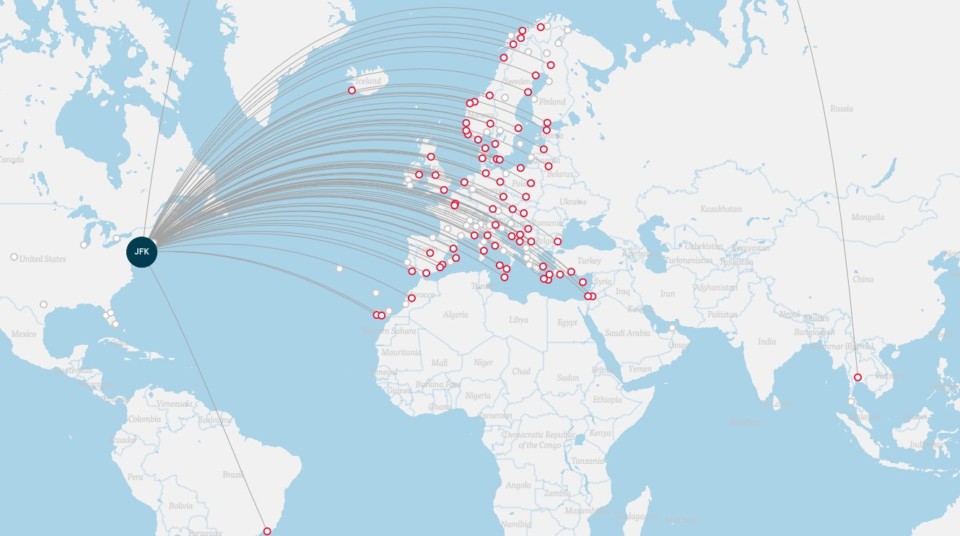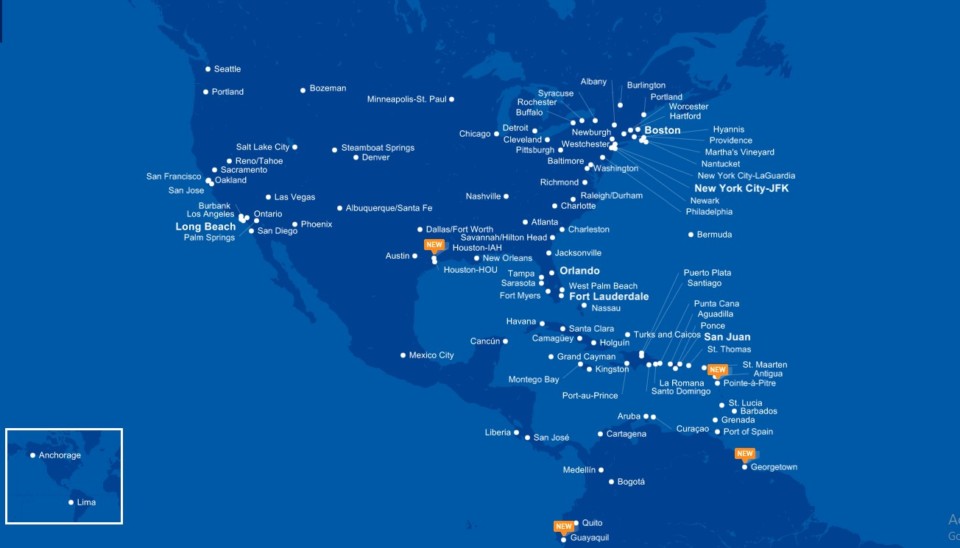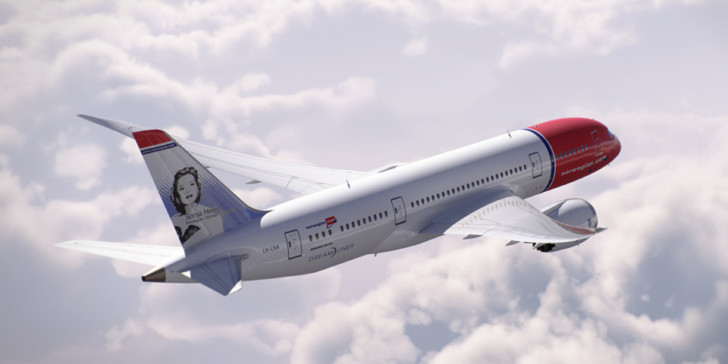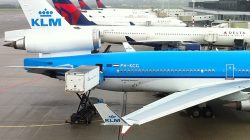Norwegian Air which put the “discount” into trans-Atlantic flights has reached a co-operation agreement with Jet Blue. Norwegian has been struggling financially and a linkup with Jet Blue could help improve their balance sheet. The agreement would allow Norwegian passengers access to flights extending deeper into the U.S. along with destinations in the Caribbean and Latin America.
Norwegian Air began as a budget carrier operating trans-Atlantic flights in an “airfare revolution”. Other budget carriers like WOW Air have tried to go the same route only to go out of business with an unsustainable business model. Norwegian differentiates itself by flying larger twin-aisle aircraft and being better able to weather the financial storms. Norwegian still has had difficulties managing its’ balance sheet and had retrenched at one time. They did have a successful September flying 3,310,424 passengers, increasing their load factor by 1.1% to 90% and a revenue increase of 2%. Instantly increasing their route map by 100 cities without a significant investment will be a needed boost for Norwegian’s balance sheet.
A Win-Win Situation
For Norwegian, they can fly their passengers from an extensive European network to many destinations in North America, the Caribbean and Latin America. Here is the current Norwegian route map:

As you can see, Norwegian has no destinations west of the Atlantic Ocean except for New York – JFK and Rio De Janeiro, Brazil. Now let’s look at the Jet Blue route map:

Comparing these two route maps, you will see there is no overlap. Combining operations without duplication of existing routes means:
- They don’t have to compete with themselves on duplicate routes
- They won’t have to figure out where to reposition aircraft from duplicate routes to new routes
- They shouldn’t have to layoff staff due to duplicate operations.
For Jet Blue, this helps their expansion plans for Europe. They want to launch Boston to London service next year but they have no landing slots for London.
Jet Blue’s Expansion Plans to Europe
The plan was to begin flying from Boston and New York to London and Amsterdam in 2021. Jet Blue has Airbus A321LR aircraft on order for these long-distance flights. Expanding to London and Amsterdam would also require obtaining landing slots for those airports. The agreement will mean that Jet Blue has access to the European market next year. Jet Blue will have access to 20 destinations in Europe to interline with its existing network.
Company Statements on the Agreement
Norwegian acting CEO, Geir Karlsen had this to say:
“We are very excited to partner with JetBlue as this will make international travel even smoother and more available for our customers. JetBlue is the largest airline at several of our key gateways in the United States, specifically New York JFK, Boston and Fort Lauderdale, and this partnership will create a plethora of new route connections for customers on both sides of the Atlantic. The partnership will provide travelers throughout the U.S., Caribbean and Latin America with more affordable fares to Europe and vice versa. And not least it will offer seamless connections with two of the most awarded low-cost airlines in the world,”
Jet Blue CEO, Robin Hayes made this statement:
“This new agreement with Norwegian seamlessly connects JetBlue’s robust network throughout the U.S., Caribbean and Latin America with the exciting European destinations on our new partner’s route map. Norwegian shares our belief that customers benefit when we can bring competition and low fares to the transatlantic market currently dominated by joint ventures, legacy alliances and sky-high ticket prices.”
My Take on the Agreement
I always love a good win-win-win deal as it is beneficial for everybody. Norwegian needs access to the Americas and Jet Blue wants access to Europe. Passengers will also be winners because they can cross the Atlantic Ocean with a single ticket. Jet Blue gets to access to the European market in 2020 instead of 2021 without having to get access to landing slots for London and Amsterdam. Both carriers are serving a less than full price airline segment so this is a complementary union. The combined carriers hope to start selling tickets in early 2020 for service beginning in the summer of 2020.
The deal could help both carriers boost both traffic and airfares in the highly competitive trans-Atlantic market.






